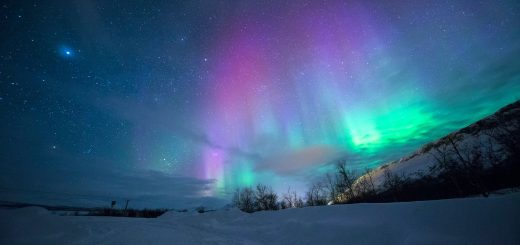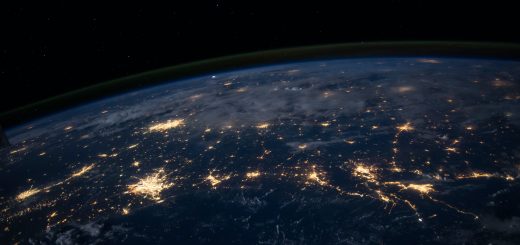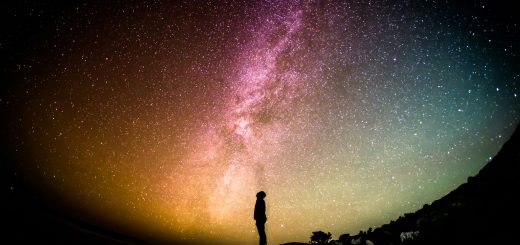How to Celebrate New Year’s in Different Cultures

Looking for more amazing products? Check out our online store and explore our collection here! Happy shopping!
Before diving in, please note: This post is for informational purposes only. If you’d like to know more about how we approach topics, feel free to check out our friendly Disclaimer Page.
Hey there, amazing readers! 
We’re committed to delivering quality posts, and your support (even just sticking around despite the ads) means everything to us. So, bear with us, and thanks for helping us keep the good vibes rolling. Now, on to the fun stuff!
TRANSLATE BUTTON AT THE END OF THE ARTICLE
A Quick Overview
New Year’s celebrations around the globe can often feel like a fascinating tapestry of traditions and customs.
Each culture has its own unique approach to welcoming the new year.
From extravagant fireworks to quiet, reflective rituals, the excitement of ringing in a new cycle is universal.
Let’s explore how different cultures celebrate this special time of year, highlighting the vibrant traditions that make each festivity special.
The Global Joy of New Year Celebrations
At the heart of New Year’s festivities is joy.
People gather with family and friends, expressing hope and optimism for the year ahead.
It’s a time of reflection, laughter, and sometimes a touch of melancholy.
I always find it incredible how different parts of the world infuse their own flavor into this celebration.
Whether it’s the colorful parades in Brazil or the quiet serenity of Japan, the essence remains the same: a fresh start.
So, how does one culture’s celebration differ from another?
Let’s take a closer look at some of the most intriguing New Year’s traditions across the globe.
The Colorful Festivities of Chinese New Year
In China, the New Year—also known as the Spring Festival—kicks off a 15-day celebration that fills the air with excitement.
The date varies each year, aligning with the lunar calendar.
This vibrant festival is known for its incredible dragon and lion dances, symbolizing strength and good luck.
Food plays a pivotal role; families gather to feast on dumplings, fish, and rice cakes.
Each dish holds significance:
Dumplings symbolize wealth.
Fish represents surplus.
Rice cakes indicate growth.
Families also engage in thorough cleaning before the celebrations begin, driving out the old year’s bad luck to welcome in good fortune.
Red lanterns fill homes and streets, warding off evil spirits.
Fireworks light up the night sky, with the loud bangs believed to scare away the mythical beast Nian.
Celebrating Chinese New Year is truly a feast for the senses—an experience I personally cherish.
The blend of laughter, food, and tradition makes it unforgettable.
Festive Foods and Traditions in Mexican New Year
In Mexico, New Year’s Eve, or "Nochevieja," is a lively affair that combines family gatherings with traditions meant to bring good luck.
As the clock nears midnight, families gather around the table for a delicious feast that often features:
One of the most fun customs involves eating twelve grapes at the stroke of midnight—one for each chime of the clock.
Each grape symbolizes a wish for prosperity in the coming year.
Miss a grape?
Well, that could mean a year of bad luck, so it’s a race against time!
Fireworks light up the sky in a colorful display, while music and dance fill the air.
I love how the spirit of togetherness permeates this celebration.
It’s not just about the food and fireworks; it’s about the laughter and warmth shared among loved ones.
The Unique Rituals of Scottish Hogmanay Celebrations
In Scotland, New Year’s Eve is referred to as Hogmanay.
This celebration encompasses various traditions, both old and new.
A significant custom is "first-footing," where the first person to enter a home after midnight brings gifts that symbolize good fortune—like coal, bread, or whiskey.
Hogmanay is marked by lively street parties, particularly in cities like Edinburgh.
The celebrations often include:
Singing Auld Lang Syne.
Fire festivals with torches and bonfires.
Traditional ceilidh dancing.
The atmosphere is electric, with a mix of music and joyous chanting.
I’ve always been amazed at how the Scots embrace this night with such passionate camaraderie.
The night often stretches well into the early hours of the morning, with friends and strangers alike bonding over shared traditions.
Bringing in the New Year with Indian Diwali Lights
While many celebrate the Gregorian New Year on January 1, in India, Diwali can be considered the festival of lights, marking a new year based on the lunar calendar.
Diwali typically falls between October and November, but its essence of renewal resonates with many during New Year celebrations.
Homes are adorned with diyas (oil lamps) and rangoli (decorative art made from colored powders).
Families gather to pray for prosperity and health.
Sweets and snacks are exchanged among neighbors, promoting community and joy.
The festival highlights how light dispels darkness, symbolizing the triumph of good over evil—a sentiment I find deeply resonant.
The warm glow from the diyas is a beautiful reminder of hope, a theme that feels universal as we all transition into a new year.
The Heartwarming Customs of Japanese Shogatsu
In Japan, Shogatsu, or New Year, is a time for family reunion and reflection.
Celebrations begin on January 1 and last until January 3.
It’s customary for families to visit shrines, offering prayers for the year ahead.
The food also plays a central role, featuring:
Osechi-ryori (a special meal with various symbolic foods).
Mochi (rice cakes).
Soba noodles (for longevity).
Japanese traditions are rich with meaning.
For instance, it’s common for parents to give children money in special envelopes, called "otoshidama," as a gesture of good luck.
The atmosphere is serene yet joyful—a blend I find incredibly calming.
There’s something beautifully simple about the way the Japanese welcome the new year.
It reflects a deep respect for tradition and a desire for harmony in the upcoming months.
Brazilian New Year: A Splash of Color and Culture
In Brazil, New Year’s Eve is celebrated with an explosion of color and music, particularly in cities like Rio de Janeiro.
People often dress in white to symbolize peace and renewal.
The beach scene is alive with festivities, including samba music and dance.
As midnight approaches, revelers jump seven waves in the ocean, each leap representing a wish for the new year.
Offerings, or "floats," are sent to the sea for the goddess Yemanjá.
The atmosphere is ecstatic, filled with laughter, dancing, and fireworks.
I’ve always loved how Brazilians embrace life with such enthusiasm.
The communal spirit of the beach celebration truly unites everyone in hope and joy.
Reflecting on the Past: Russian New Year Traditions
In Russia, the New Year is often considered the most important holiday of the year.
It is celebrated on December 31, leading into January 1.
Families typically gather around the New Year’s tree, sharing a festive meal that includes:
Olivier salad.
Herring under a fur coat.
Champaign for toasting.
The celebration includes a broadcast of the President’s New Year speech, followed by fireworks.
A unique aspect of Russian traditions is the character Grandfather Frost (Ded Moroz), who brings gifts to children.
I’ve always been fascinated by how family-centered and heartfelt these celebrations are.
Despite the cold winter nights, the warmth of togetherness shines bright, making the New Year a special time for reflection and joy.
The Midwinter Charm of Ethiopian Enkutatash
Ethiopia celebrates New Year, known as Enkutatash, in September, marking the end of the rainy season.
The holiday is celebrated with music, dance, and traditional foods like injera and doro wat.
Families dress in white garments and visit each other’s homes, exchanging gifts.
Children sing songs, and the atmosphere is filled with joy and warmth.
The holiday also signifies the start of a new year in the Ethiopian calendar, which differs from the Gregorian calendar.
I find it enchanting how Enkutatash embodies renewal and hope after a challenging rainy season.
The colors, the music, and the laughter create a tapestry of happiness that truly reflects the spirit of the New Year.
Latin American New Year: Traditions for Good Fortune
In many Latin American countries, New Year’s Eve is filled with customs aimed at bringing good luck.
For instance, it’s common to wear colored underwear—each color representing different wishes.
Yellow symbolizes wealth, while red is for love.
At midnight, many families partake in a ritual of burning the old year in a figure made of old clothes, known as "Año Viejo." This act symbolizes letting go of the past and making space for new opportunities.
I love how the celebrations are vibrant and often filled with laughter.
It’s a wonderful blend of community, joy, and hope that wraps everyone in a warm embrace as they step into the new year.
Australian New Year: Fireworks and Beach Celebrations
In Australia, New Year’s celebrations are often characterized by outdoor festivities, thanks to the warmer climate.
The iconic Sydney Harbour fireworks display is one of the biggest in the world, attracting thousands to the waterfront.
Families gather for barbecues and picnics on the beach, enjoying the summer sun.
Many Aussies participate in community events, where music and dance fill the air.
What strikes me about Australia’s New Year is the laid-back, cheerful vibe.
People relish the chance to enjoy nature and community, making it a joyous occasion that’s both relaxing and exhilarating.
Conclusion: Embracing Diversity in New Year Celebrations
Celebrating New Year’s across cultures is a beautiful reminder of our shared humanity.
Each tradition enriches the tapestry of celebrations and brings unique flavors to the mix.
Whether it’s through food, dance, or quiet reflection, the essence of hope and renewal resonates everywhere.
As we approach the new year, let’s embrace the diversity of traditions and appreciate the stories behind them.
Each culture adds a unique thread to the fabric of this global celebration, making it a time of unity, joy, and new beginnings.
So, whatever way you choose to celebrate, may your new year be filled with love, laughter, and endless possibilities!

The Enlightenment Journey is a remarkable collection of writings authored by a distinguished group of experts in the fields of spirituality, new age, and esoteric knowledge.
This anthology features a diverse assembly of well-experienced authors who bring their profound insights and credible perspectives to the forefront.
Each contributor possesses a wealth of knowledge and wisdom, making them authorities in their respective domains.
Together, they offer readers a transformative journey into the realms of spiritual growth, self-discovery, and esoteric enlightenment.
The Enlightenment Journey is a testament to the collective expertise of these luminaries, providing readers with a rich tapestry of ideas and information to illuminate their spiritual path.
Our Diverse Expertise
While our primary focus is on spirituality and esotericism, we are equally passionate about exploring a wide range of other topics and niches 

To ensure we provide the most accurate and valuable insights, we collaborate with trusted experts in their respective domains 
Our blog originally focused on spirituality and metaphysics, but we’ve since expanded to cover a wide range of niches. Don’t worry—we continue to publish a lot of articles on spirituality! Frequently visit our blog to explore our diverse content and stay tuned for more insightful reads.
Hey there, amazing reader! 
Check out our store here and take a peek at some of our featured products below! Thanks for being awesome!











